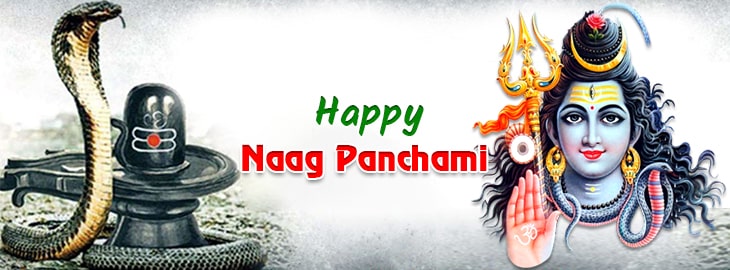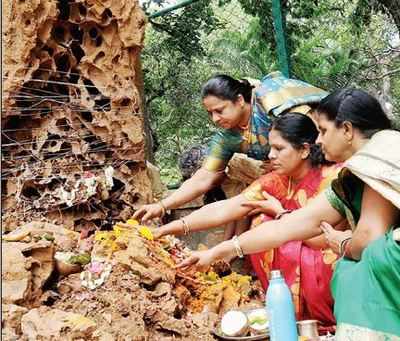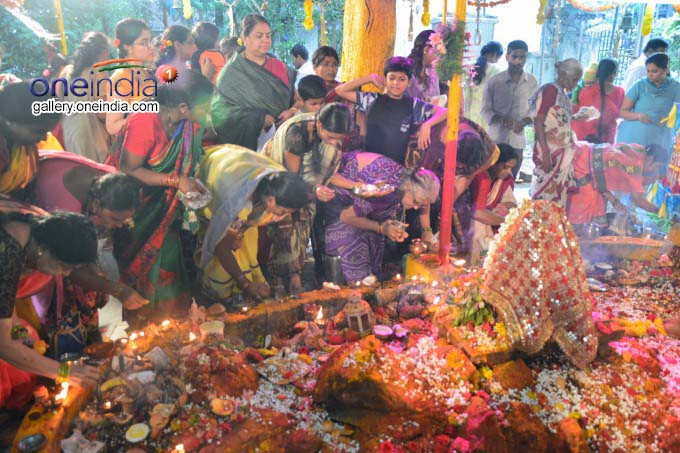ॐ श्री गुरुभ्यो नमः ॐ श्री शिवानन्दाय नमः ॐ श्री चिदानन्दाय नमः ॐ श्री दुर्गायै नमः
Source of all Images in this Blog-post : Google Images : ‘Google Image Search’ will reveal the multiple sources of every single image shared in this Blog. For more details, kindly see ‘Disclaimer‘

Naga Panchami is a day of traditional worship of Nagas or snakes observed by the Hindus throughout India. The worship is offered on the fifth day of bright half of lunar month of Shravana (July/August), according to the Hindu calendar.

Some Indian states, such as Rajasthan and Gujarat, celebrate Naga Panchami on the dark half (Krishna Paksha) of the same month.
As part of the festivities, a Naga or serpent deity made of silver, stone, wood, or a painting of snakes is given a reverential bath with milk and their blessings are sought for the welfare of the family.

Live snakes, especially cobras, are also worshipped on this day, especially with offerings of milk and generally with the assistance of a snake charmer.

In the Hindu epic Mahabharata, the sage Astika’s quest to stop the sacrifice of serpents of King Janamejaya, is well known, as it was during this sacrifice that the Mahabharata as a whole was first narrated by the sage, Vaisampayana.
This Yagna (sacrifice) was performed by Janamejaya to decimate the race of Nagas through killing every snake in existence to avenge the death of his father Parikshita due to the deadly bite of Takshaka, the king of the snakes.
The day that the sacrifice was stopped, due to the intervention of Astika, was on the Shukla Paksha Panchami day in the month of Shravana. That day has since been observed as Naga Panchami.
Etymology :
Panchami is the fifth day among the fifteen days of the moon’s waxing and/or waning period.
This special day of the serpent worship always falls on the fifth day of the moon’s waning in the Lunar Hindu month of Shravana (July/August). Hence this is called Naga Panchami. Naga in Sanskrit means: cobra or simply serpent.
History :
Indian Hindu scriptures such as Agni Purana, Skanda Purana, Narada Purana and the Mahabharata give details of history of snakes extolling worship of snakes. Sarpa Satra, the snake sacrifice where Astika, young Brahmin stops the Yagna.

In the Mahabharata epic, Janamejaya, the son of King Parikshita of the Kuru dynasty was performing a snake sacrifice known as Sarpa Satra, to avenge for the death of his father from a snake bite by the snake king Takshaka.
A sacrificial fireplace was specially erected and the fire sacrifice to kill all the snakes in the world was started by a galaxy of learned Brahmin sages.

The sacrifice performed in the presence of Janamejaya was so powerful that it was causing all snakes to fall into the Yagna Kunda (sacrificial fire pit).
When the priests found that only Takshaka who had bitten and killed Parisksihita had escaped to the nether world of Indra seeking his protection, the sages increased the tempo of reciting the Mantras (spells) to drag Takshaka and also Indra to the sacrificial fire.
Takshaka had coiled himself around Indra’s cot but the force of the sacrificial Yagna was so powerful that even Indra along with Takshaka were dragged towards the fire.
This scared the gods who then appealed to Manasadevi to intervene and resolve the crisis. She then requested her son Astika to go to the site of the yagna and appeal to Janamejaya to stop the Sarpa Satra yagna.
Astika impressed Janamejaya with his knowledge of all the Sastras (scriptures). It was then that Astika requested Janamejeya to stop the Sarpa Satra.
According to the Garuda Purana, offering prayers to snake on this day is auspicious and will usher good tidings in one’s life. This is to be followed by feeding Brahmins.
Worship :
On the day of Naga Panchami, Nagas, cobras, and snakes are worshipped with milk, sweets, flowers, lamps, and even sacrifices. Naga or serpent deities made of silver, stone, wood, or paintings on the wall are first bathed with water and milk and then worshipped with the reciting of the sacred Mantras.
Fasting is observed on this day and Brahmins are fed. The piety observed on this day is considered a sure protection against the fear of snake bite.
At many places, real snakes are worshipped and fairs held. On this day digging the earth is a taboo as it could kill or harm snakes which reside in the earth.
On this occasion doorways and walls outside the house are painted with pictures of snakes, auspicious mantras (spells) are also written on them. It is believed that such depictions will ward off poisonous snakes.
Naga Panchami is also the occasion observed as Bhratru Panchami when women with brothers worship snakes and its holes, and offer prayers to propitiate Nagas so that their brothers are protected and do not suffer or die due to snake bite.
Naga Panchami is also celebrated as Vishari Puja or Bishari Puja in some parts of the country and Bisha or Visha means poison.
Folk Tales :
Apart from the scriptural mention about snakes and the festival, there are also many folktales.
In folklore, snakes also refer to the rainy season – the Varsha Ritu in Sanskrit. They are also depicted as deities of ponds and rivers and are said to be the embodiment of water as they spring out of their holes, like a spring of water.
As it is believed that snakes have more powers than humans and on account of its association with the Hindu Gods Shiva, Devi, Vishnu and Subramanya, a degree of fear is instilled resulting in deification of the cobra and its worship throughout the country by the Hindus.
In north western India, in cities such as Benares, it is the time when Akharas (venues of wrestling practice and competitions) as part of Naga Panchami celebrations are bedecked.
On this occasion the Ahkaras are cleaned up thoroughly and walls painted with images of snakes, priests preside, and the Gurus are honoured on this auspicious occassion. Its significance is that the wrestlers stand for virility and Naga symbolizes this scheme of virility.
Akharas are decorated with snake images showing snakes drinking milk.
In Narasinghgarh Akhara in Varanasi there is special shrine dedicated to Naga Raja (King of Snakes) where a bowl is suspended above the image of the snake and milk is poured into it so that it trickle over the snake god as a form of an offering.
On this day snake charmers are everywhere in towns and villages displaying snakes in their baskets which will have all types of snakes such as pythons, rat snakes, and cobras mingled together.
Some of the snake charmers hang limp snakes around their neck and crowds gather to witness these scenes. The snakes in the basket are also worshipped on the sacred occasion.
